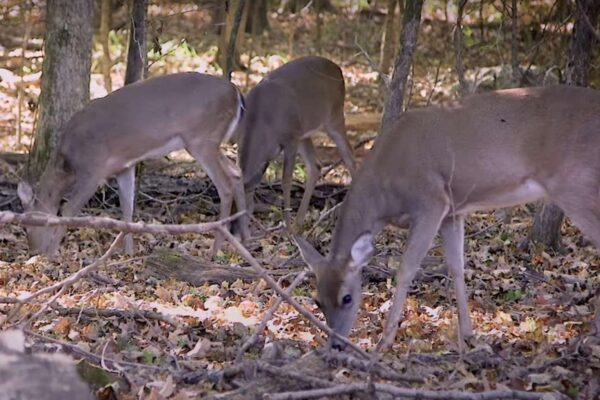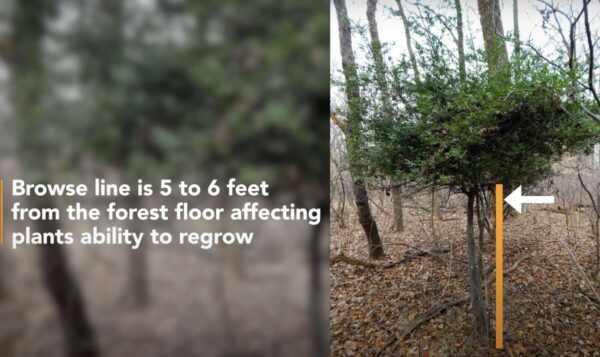
Hunting and sterilizing deer and fencing off parks are options Arlington County could pursue to cull its reportedly oversized, and hungry, deer population.
Over the last two years, consultants estimated Arlington has a herd of whitetail deer numbering 290 and, in some areas, the concentration exceeded “healthy” levels.
These large herds are overgrazing the local forest understory and eating away the habitat that sustains birds, insects and bats, according to consultants, the Dept. of Parks and Recreation and some local naturalists.
Now, the parks department is investigating ways to cull the deer. Interested residents can attend a forum on Tuesday, July 11 at the Lubber Run Community Center to learn about management options and share their thoughts.
Through Thursday, July 13, residents can take an online survey to share their thoughts on the four lethal and non-lethal methods on the table:
- professional sharpshooting
- surgical sterilization of female deer
- public archery hunting
- fenced parks
“We want to be good stewards of Arlington County we’re trying to do the best that we can and this assessment is part of it,” county Natural Resources Manager Alonso Abugattas said in a recent video. “We’re hoping that, through this, we can decide how we can best proceed. This is just the beginning of what promises to be a conversation with the public.”
In the feedback form, Arlington County says sharpshooting, with professionals using sound-suppressed rifles and lead-free bullets, is safe for the public and “the most effective and fastest method for controlling overabundant deer.”
The practice meets euthanasia criteria set by national veterinarian groups. Meat from sharpshooting is donated.
Right behind sharpshooting, in terms of efficacy, could be sterilization. The county says experimental research has shown that, four years after surgical sterilization, deer populations may be reduced to almost half their original size.
Both these would require state permission. Arlington could instead change its own codes to expand archery hunting areas. If it took this course, vetted hunters, using modern compound bows or crossbows, would cull deer.
The county acknowledges the efficacy of archery “is unlikely to be at the level necessary for plant and forest regeneration” on its own and may need to be combined with sharpshooting or sterilization.
Or, Arlington could simply build fences around entire parks — a method that avoids death and sterilization but may be costly and ineffective, the county says.
Fencing “can be expensive to build and maintain, displaces deer into adjacent communities, limits vegetation regrowth to within fence boundaries, and requires vigilance in keeping gates closed and a plan to remove deer should they enter Arlington Parks,” per the form.
Survey respondents are asked how much they support or disagree with the four methods. The county asks which goals it should prioritize in choosing a method, such as forest health, minimized deer suffering and safety.
In the video, Abugattas emphasizes that doing nothing is not an option. An adult deer eats 5-7 pounds of vegetation in a day, or about one ton in a year. After their first year, an adult can produce two fawns every year for up to 20 years.
He cites studies saying that above 15-20 deer per square mile, a “browse line” develops. Below six feet, vegetation does not regrow, affecting insects that feed 90% of Arlington’s ground nesting birds and bats.
“That is something that seriously concerns us,” Abugattas said. “We know that we have too many deer and they do cause issues with forests that we have.”

One voice advocating for a more cautious approach to culling is the Animal Welfare League of Arlington, which oversees animal control for Arlington County.
It has urged the county to develop a “practical, humane, and sustainable” plan that does not focus too much on population size, disputing the idea that Arlington has “unhealthy” population levels.
It said deer were being unfairly blamed for environmental degradation also caused by over-development, harsh fertilizers, increased foot traffic and extreme weather.

